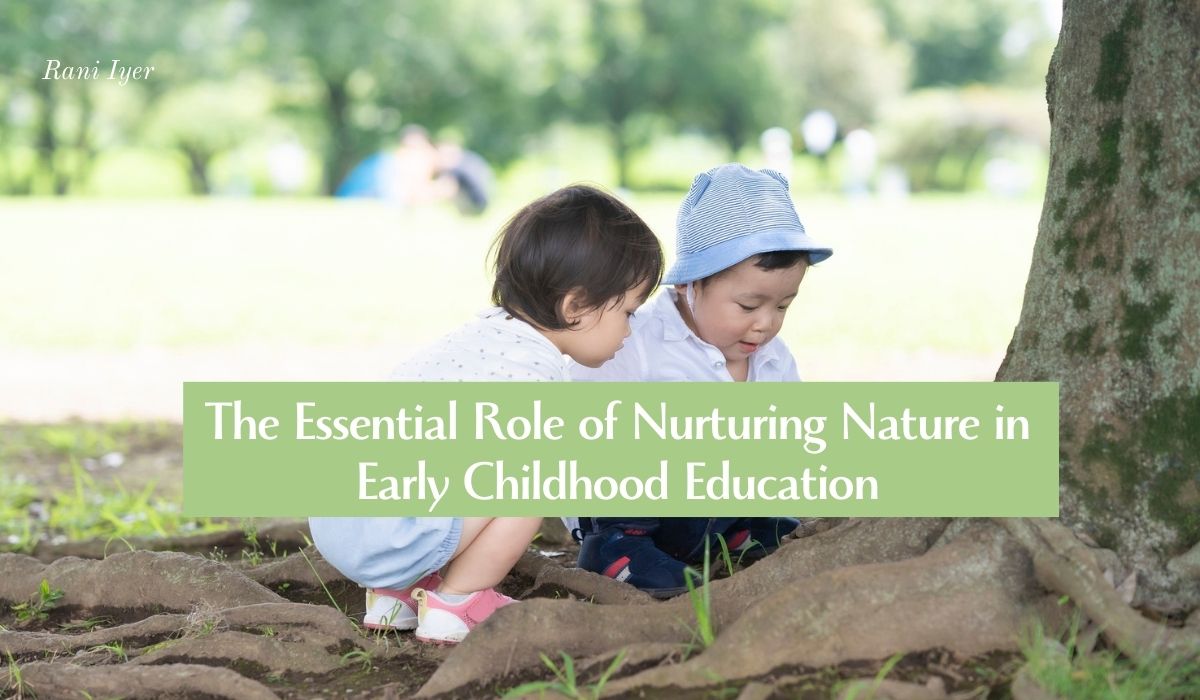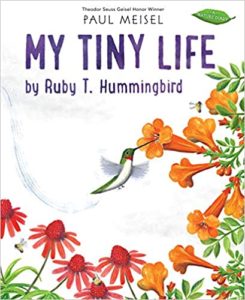In today’s rapidly changing world, the importance of early childhood education is more critical than ever. “Growing Minds: The Essential Role of Nurturing Nature in Early Childhood Education” delves into the transformative power of nature in shaping young minds. As children explore and interact with their environment, they not only develop cognitive skills but also foster emotional resilience and creativity. Nature serves as an inspiring classroom, where curiosity blooms and learning becomes an adventure. From the vibrant colors of a garden to the rhythmic sounds of the outdoors, each experience enhances sensory development and builds connections with the world. By prioritizing natural elements in early education settings, we can cultivate a generation of thoughtful, well-rounded individuals ready to embrace life’s challenges. Join us as we explore the essential role that nurturing nature plays in enriching early childhood education and paving the way for a brighter future.
Understanding the Connection Between Nature and Childhood Development
Understanding the profound connection between nature and childhood development is essential for recognizing the transformative power that natural environments hold. From the earliest stages of life, children are innately curious about the world around them. Nature provides a dynamic and stimulating setting that fosters this curiosity, allowing children to explore, experiment, and learn through direct experiences. This exploration is not just about physical activity; it encompasses cognitive, emotional, and social growth. As children engage with nature, they develop critical thinking skills and learn to navigate complex environments, which are crucial for their overall development.
Moreover, the sensory-rich experiences offered by nature play a vital role in brain development. The varied textures, colors, sounds, and smells found in natural settings activate multiple areas of the brain, enhancing neural connections and promoting holistic growth. These sensory experiences are particularly beneficial for young children, as their brains are highly malleable and responsive to environmental stimuli. Through activities like digging in soil, feeling the texture of leaves, or listening to birdsong, children build a strong foundation for sensory integration, which is essential for learning and development.
Nature also provides opportunities for children to develop social skills and emotional resilience. Group activities in outdoor settings, such as cooperative games or collaborative projects, encourage teamwork, communication, and problem-solving. These interactions help children learn to navigate social dynamics, manage conflicts, and build positive relationships. Additionally, the calming and restorative qualities of nature can significantly impact emotional well-being, reducing stress and anxiety while promoting a sense of peace and contentment. Ultimately, the connection between nature and childhood development is multifaceted, encompassing physical, cognitive, emotional, and social growth.
The Benefits of Outdoor Play for Young Learners
Outdoor play is a cornerstone of childhood development, offering a myriad of benefits that extend beyond physical health. For young learners, time spent outdoors is an opportunity to engage in unstructured play, which is crucial for fostering creativity, imagination, and problem-solving skills. Unlike structured indoor activities, outdoor play allows children to explore their surroundings freely, make decisions, and take risks. This autonomy is vital for developing self-confidence and independence, as children learn to trust their instincts and abilities.
Physical activity in natural settings also promotes physical health and motor skills development. Running, jumping, climbing, and balancing on uneven surfaces helps children build strength, coordination, and agility. These activities not only enhance gross motor skills but also contribute to overall physical fitness, reducing the risk of obesity and related health issues. Additionally, exposure to sunlight during outdoor play is essential for vitamin D synthesis, which supports bone health and immune function.
Beyond physical benefits, outdoor play has a profound impact on mental and emotional well-being. The natural environment offers a sensory-rich experience that stimulates the brain and promotes cognitive development. Activities like treasure hunts, nature walks, or building forts encourage problem-solving, critical thinking, and spatial awareness. Furthermore, the calming effects of nature can help reduce stress, improve mood, and enhance focus and attention. For children with attention deficit disorders, outdoor play can be particularly beneficial, providing a natural outlet for energy and helping to regulate emotions. Overall, the benefits of outdoor play for young learners are extensive, supporting their physical, cognitive, and emotional growth.
How Nature Stimulates Creativity and Imagination
Nature is an unparalleled source of inspiration, providing endless opportunities for children to exercise their creativity and imagination. Unlike the structured environments of classrooms or indoor play areas, natural settings are dynamic and unpredictable, encouraging children to think creatively and adapt to changing circumstances. The variety of elements found in nature, such as rocks, leaves, sticks, and water, can be used in countless ways, allowing children to invent games, build structures, or create art. This open-ended play fosters problem-solving skills and encourages children to see the world from different perspectives.
Nature’s inherent beauty and mystery also stimulate artistic expression. The vibrant colors, intricate patterns, and diverse forms found in natural environments provide a rich tapestry for children to draw inspiration from. Activities like drawing, painting, or sculpting using natural materials help children develop fine motor skills while expressing their thoughts and emotions. Additionally, the process of creating art in nature encourages mindfulness and observation, helping children appreciate the details and nuances of their surroundings.
Storytelling and imaginative play are also enriched by nature. The expansive landscapes and diverse ecosystems serve as the perfect backdrop for children to invent stories and adventures. Whether pretending to be explorers in a dense forest, sailors on a river, or gardeners in a meadow, nature provides the setting for limitless narratives. This type of play enhances language development, social skills, and emotional expression, as children communicate their ideas and negotiate roles with peers. Ultimately, nature’s ability to stimulate creativity and imagination is a powerful tool for fostering cognitive and emotional growth in early childhood.
The Impact of Natural Environments on Emotional Well-being
The impact of natural environments on emotional well-being is profound, offering a sanctuary for children to experience calm, joy, and connection. In contrast to the often overstimulating and stressful urban environments, nature provides a tranquil setting that promotes relaxation and reduces anxiety. The rhythmic sounds of wind, water, and wildlife, along with the soothing visual elements of greenery and open spaces, create a peaceful atmosphere that helps children regulate their emotions and find comfort.
Exposure to natural environments has been shown to lower levels of cortisol, the stress hormone, in both children and adults. This reduction in stress can lead to improved mood, better sleep, and enhanced overall health. For children, spending time in nature can be particularly beneficial in managing emotions, as they learn to cope with challenges and develop resilience. Activities like hiking, gardening, or simply sitting quietly in a natural setting can provide a sense of grounding and stability, helping children navigate the complexities of their feelings.
Nature also fosters a sense of wonder and awe, which can have a profound impact on emotional development. The beauty and intricacies of the natural world inspire feelings of gratitude, empathy, and connectedness. These emotions are essential for developing a positive self-image and building strong relationships with others. Additionally, the opportunity to care for living things, such as plants or animals, teaches children responsibility and compassion, further enhancing their emotional well-being. By integrating natural environments into early childhood education, we can create spaces that support emotional growth and resilience, helping children thrive in all aspects of their lives.
Integrating Nature into Early Childhood Curriculum
Integrating nature into early childhood curriculum is a powerful way to enhance learning and development. By incorporating natural elements into educational activities, educators can create a rich and engaging learning environment that supports cognitive, physical, and emotional growth. Nature-based activities can be seamlessly integrated into various subjects, from science and math to art and language, providing a holistic approach to education.
One effective way to integrate nature into the curriculum is through experiential learning opportunities. Field trips to parks, gardens, or nature reserves allow children to explore and interact with their surroundings firsthand. These experiences not only deepen their understanding of natural concepts but also foster a sense of curiosity and wonder. Hands-on activities like planting seeds, observing wildlife, or conducting experiments in outdoor settings can make learning more meaningful and memorable.
Additionally, nature can be incorporated into daily classroom routines and activities. Simple changes, such as using natural materials for art projects, incorporating outdoor time into the schedule, or creating a classroom garden, can significantly enhance the learning experience. Storytime can take place under a tree, math lessons can involve counting leaves or rocks, and science experiments can utilize natural elements. By weaving nature into the fabric of the curriculum, educators can create a dynamic and stimulating learning environment that nurtures the whole child.
Practical Tips for Incorporating Nature in Learning Activities
Incorporating nature into learning activities can be both fun and effective, providing numerous benefits for young learners. Here are some practical tips for creating nature-based educational experiences:
- Outdoor Classrooms: Transform a section of the schoolyard or nearby park into an outdoor classroom. Use natural elements like logs, rocks, and plants to create seating areas and learning stations. This space can be used for a variety of subjects, from reading and storytelling to science experiments and art projects.
- Nature Walks: Regular nature walks can be a simple yet powerful way to connect children with their environment. Encourage children to observe and document their findings, whether through drawings, journals, or photographs. These walks can be used to teach concepts related to biology, ecology, and environmental science.
- Gardening Projects: Starting a garden is a fantastic way to teach children about plant life, ecosystems, and sustainability. Involve children in planting, watering, and caring for the garden. Use the garden as a living laboratory for lessons on growth cycles, nutrition, and environmental stewardship.
- Natural Art Supplies: Use natural materials for art projects. Collect leaves, flowers, twigs, and rocks for collage-making, painting, and sculpting. These materials can inspire creativity and help children appreciate the beauty and diversity of the natural world.
- Sensory Activities: Create sensory bins filled with natural items like sand, soil, water, and various textures. These bins can be used for tactile exploration, fostering sensory development and mindfulness. Encourage children to describe their experiences and observations.
By incorporating these practical tips into learning activities, educators can create enriching and engaging experiences that connect children with nature and enhance their overall development.
Case Studies: Successful Nature-Based Early Childhood Programs
Exploring successful nature-based early childhood programs provides valuable insights into the benefits and implementation of nature-centric education. These case studies highlight innovative approaches and demonstrate the transformative impact of integrating nature into early learning environments.
- Forest Schools: Originating in Scandinavia, Forest Schools have gained popularity worldwide for their unique approach to early childhood education. These programs emphasize outdoor learning and play, with children spending significant time in natural settings. Studies have shown that Forest Schools enhance physical health, cognitive development, and emotional well-being. Children in these programs develop strong problem-solving skills, resilience, and a deep connection with nature.
- Nature Preschools: Nature Preschools, like the Dodge Nature Preschool in Minnesota, provide a curriculum centered around environmental education. These preschools offer hands-on experiences in natural settings, including gardening, hiking, and wildlife observation. Research indicates that children in Nature Preschools exhibit improved social skills, creativity, and academic readiness. The immersive nature-based curriculum fosters a love for learning and a sense of stewardship for the environment.
- Eco-Schools: Eco-Schools integrate sustainability and environmental education into their curriculum, promoting eco-friendly practices and outdoor learning. Schools like the Green School in Bali focus on holistic education, incorporating nature into all aspects of learning. Students engage in projects related to renewable energy, organic farming, and conservation. These programs have shown positive outcomes in academic performance, environmental awareness, and community engagement.
These case studies illustrate the diverse and impactful ways that nature-based education can be implemented. By adopting similar approaches, educators can create enriching learning environments that support the holistic development of young children.
The Role of Educators in Facilitating Nature Experiences
Educators play a pivotal role in facilitating nature experiences for young learners. Their enthusiasm, knowledge, and creativity can significantly enhance the impact of nature-based education. By acting as guides and mentors, educators can create meaningful and memorable outdoor learning experiences that foster curiosity, exploration, and growth.
One key role of educators is to create a safe and supportive environment for outdoor activities. Ensuring that children feel comfortable and confident in natural settings is essential for fostering positive experiences. Educators can achieve this by gradually introducing children to outdoor environments, explaining safety rules, and providing appropriate supervision. Encouraging children to take calculated risks and explore their surroundings independently is also important for building self-confidence and resilience.
Educators can also act as facilitators of discovery and learning. By posing open-ended questions, providing resources, and encouraging inquiry, they can help children develop critical thinking skills and deepen their understanding of natural concepts. Activities like scavenger hunts, nature journaling, and citizen science projects can be used to engage children in hands-on learning and observation. Additionally, educators can integrate nature into various subjects, creating interdisciplinary lessons that connect natural elements with academic concepts.
Furthermore, educators can serve as role models for environmental stewardship. By demonstrating sustainable practices, such as recycling, composting, and conserving resources, they can instill a sense of responsibility and respect for the environment in young learners. Educators can also involve children in community projects, such as tree planting or habitat restoration, fostering a sense of connectedness and civic engagement. Ultimately, the role of educators in facilitating nature experiences is crucial for creating enriching and impactful learning environments.
Challenges and Solutions in Nurturing Nature in Education
Nurturing nature in education presents several challenges, but with thoughtful solutions, educators can overcome these obstacles and create effective nature-based learning environments.
One common challenge is the lack of access to natural spaces, especially in urban areas. Schools may not have large outdoor areas or nearby parks where children can explore nature. To address this, educators can create small-scale natural environments within school grounds. Container gardens, green walls, and rooftop gardens are examples of creative solutions that bring nature into urban settings. Additionally, partnerships with local parks, nature centers, and environmental organizations can provide opportunities for field trips and outdoor learning experiences.
Another challenge is the perception that outdoor learning is less rigorous or academic than traditional classroom activities. Some educators and parents may be concerned that nature-based education does not adequately prepare children for academic success. To counter this, educators can highlight the research and evidence supporting the benefits of nature-based learning. Demonstrating how outdoor activities can enhance cognitive skills, creativity, and emotional well-being can help build support for integrating nature into the curriculum.
Weather and seasonal changes can also pose challenges for outdoor learning. Inclement weather or extreme temperatures may limit opportunities for outdoor activities. Educators can plan for these variations by incorporating flexible and adaptable nature-based lessons. Indoor activities that use natural materials, virtual nature exploration, and weather-appropriate outdoor gear can help maintain continuity in nature-based education.
By addressing these challenges with innovative solutions, educators can create effective and enriching nature-based learning environments that support the holistic development of young learners.
Fostering a Lifelong Love for Nature in Children
Fostering a lifelong love for nature in children is essential for their overall development and well-being. By prioritizing nature-based education, we can create enriching learning environments that support cognitive, physical, and emotional growth. As children explore and interact with their natural surroundings, they develop critical thinking skills, creativity, and emotional resilience. The sensory-rich experiences offered by nature enhance brain development, while outdoor play promotes physical health and social skills. Integrating nature into the curriculum provides holistic learning opportunities that connect academic concepts with real-world experiences.
Educators play a crucial role in facilitating nature experiences, creating safe and supportive environments for exploration and discovery. By acting as guides and mentors, they can inspire curiosity and foster a sense of stewardship for the environment. Overcoming challenges, such as lack of access to natural spaces and weather variations, requires innovative solutions and community partnerships.
Ultimately, nurturing nature in early childhood education sets the foundation for a lifelong appreciation and respect for the natural world. By instilling a love for nature in young learners, we can cultivate a generation of thoughtful, well-rounded individuals ready to embrace life’s challenges and contribute to a sustainable future. As we continue to explore the essential role of nurturing nature in early childhood education, we pave the way for a brighter and more connected world.



